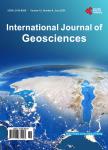Drought and Associated Impacts in the Great Plains of the United States—A Review
Drought and Associated Impacts in the Great Plains of the United States—A Review作者机构:1School of Meteorology University of Oklahoma Norman USA 2Oklahoma Climatological Survey University of Oklahoma Norman USA 1School of Meteorology University of Oklahoma Norman USA 2University of Reading Reading UK School of Meteorology University of Oklahoma Norman USA
出 版 物:《International Journal of Geosciences》 (地球科学国际期刊(英文))
年 卷 期:2013年第4卷第6期
页 面:72-81页
学科分类:07[理学] 070601[理学-气象学] 0706[理学-大气科学]
主 题:Drought Great Plains United States Rainfall Precipitation
摘 要:The Great Plains region of the United States is susceptible to drought of all kinds including meteorological/climatological, agricultural, hydrological, and socioeconomic. Drought conditions in the region span varying spatial and temporal scales and the causes include: 1) certain synoptic conditions that favor drought such as mid-tropospheric ridging over the drought-affected area and a weak low-level jet;2) sea surface temperature anomalies and associated teleconnections;3) land-atmosphere coupling;and 4) anthropogenic effects. While drought can span as few as a couple of months, the most severe droughts can occur at the decadal scale such as the 1930s Dust Bowl, the worst drought in recent history from a societal standpoint. Such droughts in the Great Plains have widespread impacts on agriculture, water resources, human health, and the economy.



